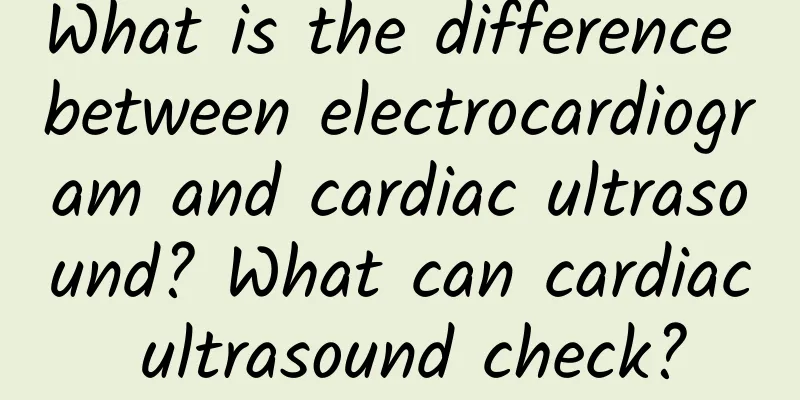How to treat bilateral polycystic ovaries?

|
The ovaries are reproductive organs unique to women and are also organs that deserve protection. Bilateral polycystic ovary syndrome is a common endocrine disease in women of childbearing age, with an onset age of 20-40 years. Many women are unable to become pregnant due to bilateral polycystic ovaries. Therefore, early diagnosis and treatment are key to detecting symptoms early. So, how to treat bilateral polycystic ovaries? Treatment 1. General treatment: Patients should actively exercise, reduce the intake of high-fat and high-sugar foods, and lose weight. This can cause the androgen level to drop, which is beneficial for restoring ovulation. 2. Drug treatment: Drug treatment can counteract the effects of androgens and induce ovarian ovulation. The drugs used are mainly oral contraceptives, which can also regulate the menstrual cycle. It is usually taken for about 3-6 months, and you can stop taking the medicine after the hormone level test is normal. Drug treatment In view of the fact that the main characteristics of this disease are persistent anovulation and excessive androgen, traditional drug treatment includes two aspects, namely ovulation induction and anti-androgen. Although some patients can ovulate through drug treatment, clinically, side effects such as high ovulation rate, low pregnancy rate, and increased probability of ovarian hyperstimulation syndrome and multiple pregnancy are common. In addition, polycystic ovary syndrome can be divided into hyperandremia acne type, high dehydroepiandrosterone type, hyperprolactinemia type, hyperinsulinemia type, obesity type, high 17-hydroxyprogesterone type, hyperestrogenemia type, etc. Treatment must select drugs according to different causes and different types. Surgery Hyster minimally invasive surgery effectively treats polycystic ovary syndrome and has opened up a new way for the effective treatment of polycystic ovary syndrome. This technology breaks through many weaknesses of traditional treatment techniques and brings new hope to many female patients who pursue happiness and advocate beauty. It not only enables women to quickly recover from "morbid ugliness" to "healthy beauty", but also solves the problem of long-term infertility. Ovarian perforation and ovarian wedge resection under minimally invasive technology is a minimally invasive surgery that involves making 1-3 small incisions with a diameter of 0.5-1.0 cm in the abdominal wall and inserting a special optical endoscope for examination and surgery. Doctors can visually see the tissues and organs in the pelvic and abdominal cavities magnified 20 times on the TV screen, which allows them to quickly make a clear diagnosis and then perform necessary surgical treatment using minimally invasive techniques. The possibility of open surgery during the operation is very small. Minimally invasive surgery can reduce the trauma to the abdominal wall to a minimum. The abdominal wall scar after the operation is tiny and does not affect the appearance. The wound pain is mild and recovery is fast. The patient can be discharged from the hospital 3 days after the operation. After ovarian perforation surgery using minimally invasive technology, the ovarian white membrane becomes thinner, the eggs are easily discharged, and the pregnancy rate reaches more than 90% 6 months after the surgery. |
<<: What to eat for polycystic ovary
>>: How to regulate endometrial thickness in polycystic ovary?
Recommend
What is the cause of bleeding after conservative treatment of ectopic pregnancy?
Ectopic pregnancy is a condition that many women ...
Can I do yoga during my period?
Yoga is a kind of exercise that is particularly s...
Why are my nipples red, swollen and itchy?
Breast health has always been something that many...
What to do if menopausal symptoms are severe
We cannot ignore the menopause in women. We must ...
How long does it take to conceive?
Under normal circumstances, how long does it take...
Rectoperineal fistula
Many people do not know much about rectal perinea...
How to get back in shape after childbirth
In fact, people nowadays love beauty very much, s...
What are the benefits of drinking honey for girls?
Girls are more fond of beauty. They not only pay ...
The difference between glucose tolerance and glucose screening
What is the difference between glucose tolerance ...
How long does it take for hcg to be metabolized?
Many people find that the hcg level in their bloo...
Is it normal to have a heavy menstrual flow for the first time after childbirth? There are these common reasons
A woman's menstruation will stop after she be...
How long does it take for vulvar itching and swelling to heal?
Vulvar itching and swelling is not a very serious...
How to better care for chronic cervicitis with squamous metaplasia?
When the female cervix is infected by bacteria,...
Pictures of female inguinal hernia
Key reminder: After a woman suffers from inguinal...









